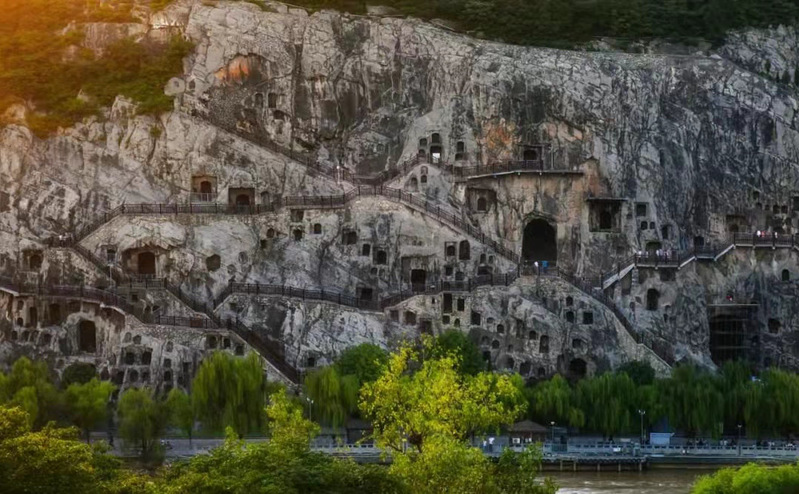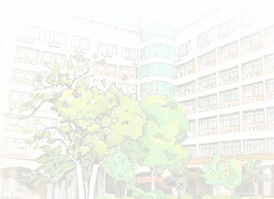Introduction
Longmen, also known as Yiqu, is located in the southern suburbs of the ancient capital of Luoyang. The two mountains are facing each other, covered with Buddha's light. The scenery is so scenic that it is a wondrous sight depicted by Su in the Song Dynasty as "Two mountains with a treacherous terrain, together protecting a wonderful water".

Longmen Grottoes is known as one of the "Three great treasures of stone art in China" along with Mogao Grottoes and Yungang Grottoes. The grottoes were first dug in the Northern Wei Dynasty and took more than 400 years to build, with a history of 1,500 years.[1]
Representative Grottoes
Binyang middle grotto:
Binyang middle grotto is a representative work of the Northern Wei Dynasty (386-512 AD). It took 24 years to build this grotto. Inside the grotto there are 11 large statues of Buddha. The main statue of Sakyamuni, with a clear face and natural expression, is a masterpiece of stone carving art in the mid Northern Wei Dynasty. [1]

Fengxian Temple:
Fengxian Temple is the largest cave in the Longmen Grottoes, with a length and width of more than 30 meters each. The most extraordinary thing about the Fengxian Temple is the huge statue of Luciana in the middle, which is really an exquisite masterpiece of art.

According to the scriptures, Lushanas means light shining everywhere. This Buddha statue, with a full chin and beautiful eyes, smiling and looking down slightly, resembles a wise and kind middle-aged woman and is revered by people.[1]
Guyang Grotto:
Guyang grotto is one of the earliest and richest of the Longmen Grottoes. Most of the landmarks in the history of Chinese calligraphy, The Longmen Twenty Calligraphic Gems, are concentrated here. The Longmen Twenty Calligraphic Gems are the essence of the art of calligraphy inscribed in the Longmen Grottoes and have been admired by the world.[2]

(“The Record of the Making of Buddha Statues by Lingzang Wei” of the Longmen Twenty Calligraphic Gems)
Historical Influence
Because of the magnificent carvings of the grottoes infect people, the Longmen Grottoes, which are dominated by Buddhist statues, attract many people to stay.[2]

The Longmen Grottoes, a cultural heritage overflowing with the emotion of faith, demonstrate the ancient people's prayers for a happy life. The spiritual quest of the Chinese people for a better life can be thoroughly explained through this humanistic landscape, which has been passed down for thousands of years.[2]
References:
[1]https://fo.ifeng.com/foyibolan/detail_2012_03/07/13019653_0.shtml
[2]http://news.sohu.com/20060911/n245280563.shtml






